| Umělec magazine 2007/3 >> MEANWHILE IN MOSCOW | List of all editions. | ||||||||||||
|
|||||||||||||
MEANWHILE IN MOSCOWUmělec magazine 2007/301.03.2007 Diana Mačulina | moscow essay | en cs de es |
|||||||||||||
|
Recent events in Moscow demonstrate that contemporary art is coming into fashion: private funds and museums have opened. The day immediately following the opening of a show curated by Oleg Kulik called I Believe at the Winzavod Contemporary Art Center, a swarm of pilgrims of all ages and classes flocked to see it. This was lot of people for a Monday when one would think people should be at work. But this does not mean that art has finally ceased being an elitist conspiracy of the devoted and suddenly appeared to be understandable for everybody just as it is. It is merely a fashion, which is insipid and void of critical potential. Before its presentation to a broader audience, art has been distilled from dangerous admixtures and adapted to the needs of the high and mighty. As in the USSR art is again split into “official” and “underground” parts. The role of censor in contemporary Russia has been assumed by the Orthodox Church.
Orthodox Jihad Legal action was initiated by Orthodox believers against artist Avdey Ter-Oganian who, because of his 1998 paper reproductions of Christian icons chopped with an axe, had to seek political asylum in the Czech Republic; against organizers of an analytical exhibition called Beware, Religion! in the Sakharov Center in 2003; and against Marat Guelman’s 2005 Russia-2 exhibition. As a result, the Russian art world has begun to censor itself with works concerning religious subjects. This was unacceptable for Andrey Yerofeyev, director of Tretyakov Gallery’s department of contemporary art. As part of the Second Moscow Biennale (March 1 – April 1, 2007), he organized an exhibition entitled Forbidden Art at the Sakharov Museum, where he presented works of different periods that were grim and hard-edged and had been rejected in 2006. Even without the hypertrophied precautions, the show was outstanding. Except for the notice at the entrance saying, “children under 16 not admitted, all the paintings were hidden behind a false wall and could only be seen through holes. But because the holes were made at a considerable height, short people would have to ask a custodian for a stool and to move it from one exhibit to the next (a hint that to understand art one has to grow up). However, even these tricks failed to save the exhibition from the anger of Orthodox fanatics. Most of all, they were outraged over Vagrich Bakhchanian’s work featuring the face of crucified Jesus hidden behind the Order of Lenin insignia. This was no random coincidence. Communism in the Soviet Union was a new religion, and now the church has taken on Soviet strategies to liquidate its opponents. They were also indignant over a work by the PG group depicting an officer raping a soldier while a row of soldiers look on; an inscription at the bottom emulates a slogan of Russian skinheads: Long Live Russia!This picture depicts little more than the truth about the army, where soul and body are subjected to torture. Sychov was one such soldier; he was raped so brutally that doctors had to amputate his legs. Orthodox believers did not limit themselves to suing the exhibition, which they said had “blackened” Russia; they also organized a picket before the Sakharov Museum on the day of a discussion announced by exhibition organizers. According to Moscow law, formal requests for public demonstrations are to be submitted ten days prior to a planned event. As the discussion was announced only four days before its opening, officials allowed the picket in contravention of the law. It suggests that this surge of an orthodox “jihad” had been provoked by the authorities. The posters carried by the believers presented the most terrible truth about Russia. The words, “We stand up for God! Moscow is worse than Kondopoga” is an explicit threat to all immigrants from the Caucasus. They are going to continue murdering non-Russians. In a slogan, “For every Judas there is a noose and doomsday,” it is no accident that the noose comes first. Frightened, cultural officials surrendered the territory without a fight: they suspended Yerofeyev from organizing any major exhibitions in the Tretyakov Gallery for one year. At issue is a very clear double standard: because Russian foreign policy is accompanied by demonstrations of democracy, the Tretyakov gallery’s first show in Paris will be about Soc-Art and organized by the same Andrey Yerofeyev; the works from Forbidden Art, that had failed to pass through the inter-museum censorship in Moscow, will be included. Education is the only way to confront such fanaticism, but nobody stands up for introducing contemporary art into school curriculum on par with religion. When state educational program is absent, private initiatives begin to act. Art Vaccination State censorship does not engage with the private sector, where the owner’s taste alone rules. Collector and businessman Igor Markin has original passions and, most of all, he has faith in himself. In early June 2007, he opened his own museum, which could be regarded as a game for the sake of his own image—something like a museum of The Ekaterina Cultural Foundation established by businessman Vladimir Semenikhin. But Markin’s aim was to become a new Tretyakov gallery, to interest a broad audience in contemporary Russian art, and to make it a new national idea. An original system of exposition and museum work met the aim. Markin is convinced that a forcible infusion of piety to culture is not possible, and that museums must be interesting and never boring. In order for people to see art as something personal, they should feel as if they were at home in a museum. So Markin replaced the traditional bitter elderly women guards with smiling girls; coffee and sunflower seeds are offered at the ticket office; eating and drinking is encouraged in the exhibition halls. The museum stays open until 1 a.m. and DJs perform on Fridays. Of course, it all looks like an entertainment program created by a well thought-out PR campaign, but it is an important step toward the public even if it was not made by artists; the mode of presentation does not change or lessen the value of the exhibited works dated from the early 60s to the present. As a result, office workers can choose where to go after work between a disco and a cinema—or to a museum. At first, Markin’s decision not to provide the exhibits with titles and names of authors might appear contradictory to the idea of education, but what this does is to enable a positive and sincere confrontation with the art works presented devoid of commentary by someone far away, famous and knowledgeable. An interactive ingredient is a voting mechanism in which stickers saying “For” and “Against” for exhibits voting are handed out with entry tickets. It is promised that works that encounter significant disapproval will be removed and favored works will remain when exhibitions are modified—an event that coincides with the change of the seasons. So far, the public has not demonstrated any developed understanding of art. Boris Mikhailov’s photograph of a bicycle thief, whose testicles got entangled into the wheel spokes, was hypocritically regarded as the worst work, whereas a kitsch installation by Rostan Tavasiev with plush toys, who forced museum’s lock with a beer bottle-opener, was recognized as the best one. Naked Interest Businessmen are seized by creative outbursts; artists make official state careers for themselves. Power encounters both of them half-way for the same reasons, which is why the Yerofeyev's project was presented in Paris. For the officials, it is a great success that human-dog Oleg Kulik felt stability and began to beg. First, the dog learned to make ordinary commercial photos that were not good enough for glamourous magazines, but were interesting as any works made by a dog. Later, he picked up the scent leading to the radiant future of orthodox fascism. Without confrontation with the new censors, he turned from God’s fool into a guru and urged artists to see the light. His services were appreciated and awarded with a retrospective at the Central House of Artists, an unexampled caliber of 10,000 square meters in the center of Moscow for one author. Organizers joked, “It’s clear now who that artist is, to whom the Central House of Artists belongs.” It turned out, however, that the kennel was too big for the dog and one tenth of the space would have been enough for Kulik’s career retrospective. Visitors had to walk hundreds of meters from one work to the next through dark and slippery labyrinths whose walls, floors and ceilings were covered in black polyethylene—and only to find that almost all works were repeated and deserved no public excitement. The large scale of the event was intended only to demonstrate the opportunities available to any contemporary artist who’d agree to be accompanied by the leash of state ideology.
01.03.2007
Recommended articles
|
|||||||||||||
|
04.02.2020 10:17
Letošní 50. ročník Art Basel přilákal celkem 93 000 návštěvníků a sběratelů z 80 zemí světa. 290 prémiových galerií představilo umělecká díla od počátku 20. století až po současnost. Hlavní sektor přehlídky, tradičně v prvním patře výstavního prostoru, představil 232 předních galerií z celého světa nabízející umění nejvyšší kvality. Veletrh ukázal vzestupný trend prodeje prostřednictvím galerií jak soukromým sbírkám, tak i institucím. Kromě hlavního veletrhu stály za návštěvu i ty přidružené: Volta, Liste a Photo Basel, k tomu doprovodné programy a výstavy v místních institucích, které kvalitou daleko přesahují hranice města tj. Kunsthalle Basel, Kunstmuseum, Tinguely muzeum nebo Fondation Beyeler.
|








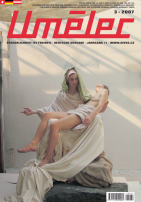












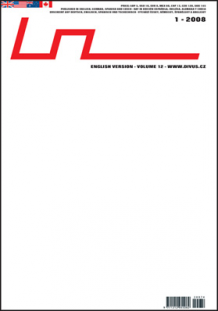




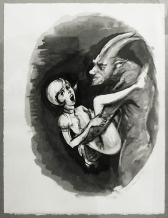
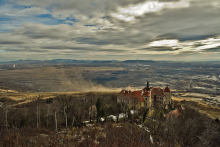
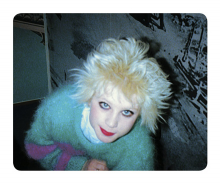
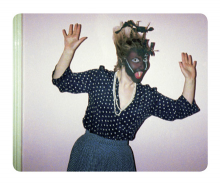


 New book by I.M.Jirous in English at our online bookshop.
New book by I.M.Jirous in English at our online bookshop.
Comments
There are currently no comments.Add new comment